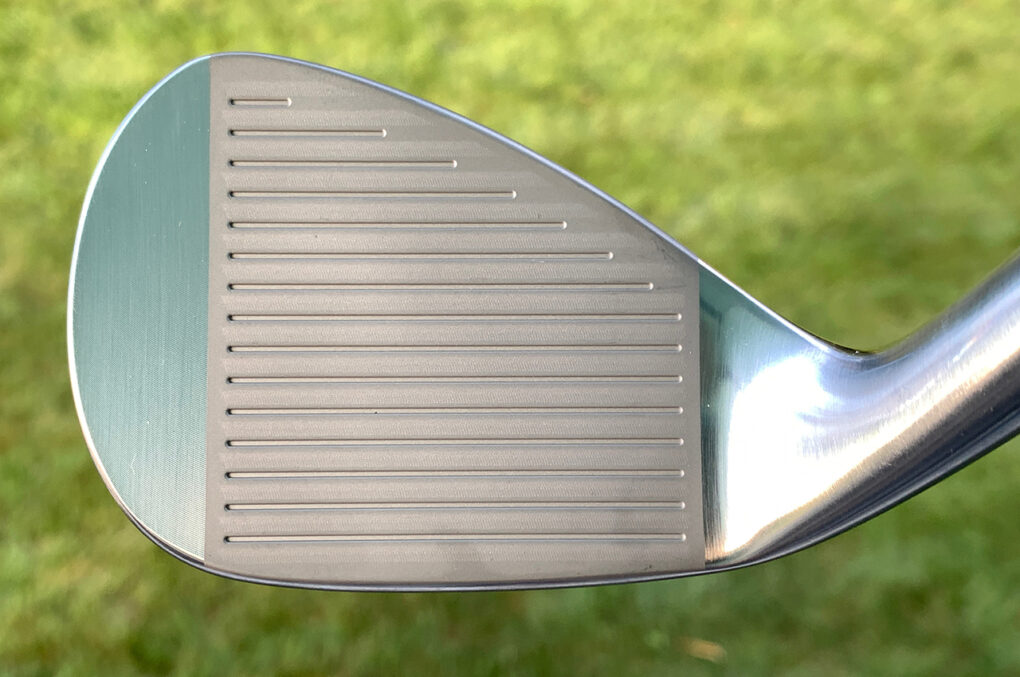Mizuno T22 wedges

Gear: Mizuno T22 wedges
Price: $159.99 each with True Temper Dynamic Gold Tour Issue Wedge shafts and Golf Pride Z Grip at Carl’s Golf Land and Dick’s Sporting Goods.
Specs: Forged 1025 boron steel with milled grooves and four sole grind options. Lofts from 45 to 62 degrees.
Available: October 14
To create muscleback and cavity-back irons for elite golfers, Mizuno has used a special forging process and specific materials for years, subtly tinkering with the shape of things like the leading edge, the topline and the sole width. However, from one generation to another, the clubs tend to look very similar because that’s what college golfers, aspiring pros and golfers with powerful, repeatable swings tend to like.
When it comes to wedges, Mizuno has traditionally followed the same recipe. Sure, the Japanese company has tinkered with blue-finished wedges, but there has always been a satin chrome option, a traditional teardrop shape and groove technologies to enhance spin that don’t distract golfers in the address position.
With the release of the T22 wedges, Mizuno continues to bring spin and control enhancing features to the short game in a package that should appeal to those who love the look of classic wedges.
We occasionally recommend interesting products, services, and gaming opportunities. If you make a purchase by clicking one of the links, we may earn an affiliate fee. Golfweek operates independently, though, and this doesn’t influence our coverage.
Grooves

The Mizuno T22 wedges are grain-flow forged using 1025 carbon steel infused with Boron. (David Dusek/Golfweek)
The T22 wedges are grain-flow forged using 1025 carbon steel that has been infused with Boron, like several of Mizuno’s irons since 2016. Boron is harder than the carbon steel, and using it strategically helped Mizuno designers create grooves that maintain the durability of their sharpness without sacrificing feel
The CNC-milled grooves in the T22 wedges vary based on loft. The pitching wedges and gap wedges (45-53 degrees) have grooves that are deep and narrow to mimic the grooves found in irons. The grooves in the sand wedges and lob wedges (54 to 62 degrees) are wider and deeper to help get water, sand and debris off the hitting surface for increased consistency.

The HydroFlow Micro Grooves between the main grooves help manage moisture. (David Dusek/Golfweek)
Shorter and more compact from heel to toe than the T20 wedges, the T22 wedges have HydroFlow Micro Grooves between the main grooves. They look like a swirl pattern and are laser etched into the face to help get moisture off the hitting surface.
Grinds

TK (David Dusek/Golfweek)
Mizuno is offering the T22 wedges in four different sole grind configurations.
- S Grind (45 to 58 degrees) – This grind has a straight sole with minimal relief in the heel and toe. It is designed to essentially be an extension of a player’s iron set and be used on fuller shots.
- D Grind (54 to 58 degrees) – With some heel and toe relief, the D Grind allows players to open the face and add some versatility to their greenside game.
- C Grind (56 to 60 degrees) – For golfers who love to open the face and get the leading edge under the ball on flop shots and aggressive bunker shots, the C grind has heavy heel and toe relief. It is also ideal for firm courses and areas where sand is compacted.
- X Grind (58 to 62 degrees) – This sole grind has the most heel and toe relief for advanced players and golfers who want the most versatility around the greens.
Finishes

In addition to satin chrome and a raw finish, Mizuno offers the T22 wedges in denim copper. (David Dusek/Golfweek)
The T22 wedges are being offered in three different finishes. The Satin Chrome finish has a mirrored look and has been given a microlayer of copper beneath Nickel Chrome plating that Mizuno claims will enhance feel. Wedges that have the Denim Copper finish, which look weathered and will patina over time, also have the microlayer of copper.
The Raw finish has a soft metallic look to it and will rust over time and with exposure to water, but it does not have the copper microlayer of copper.
















